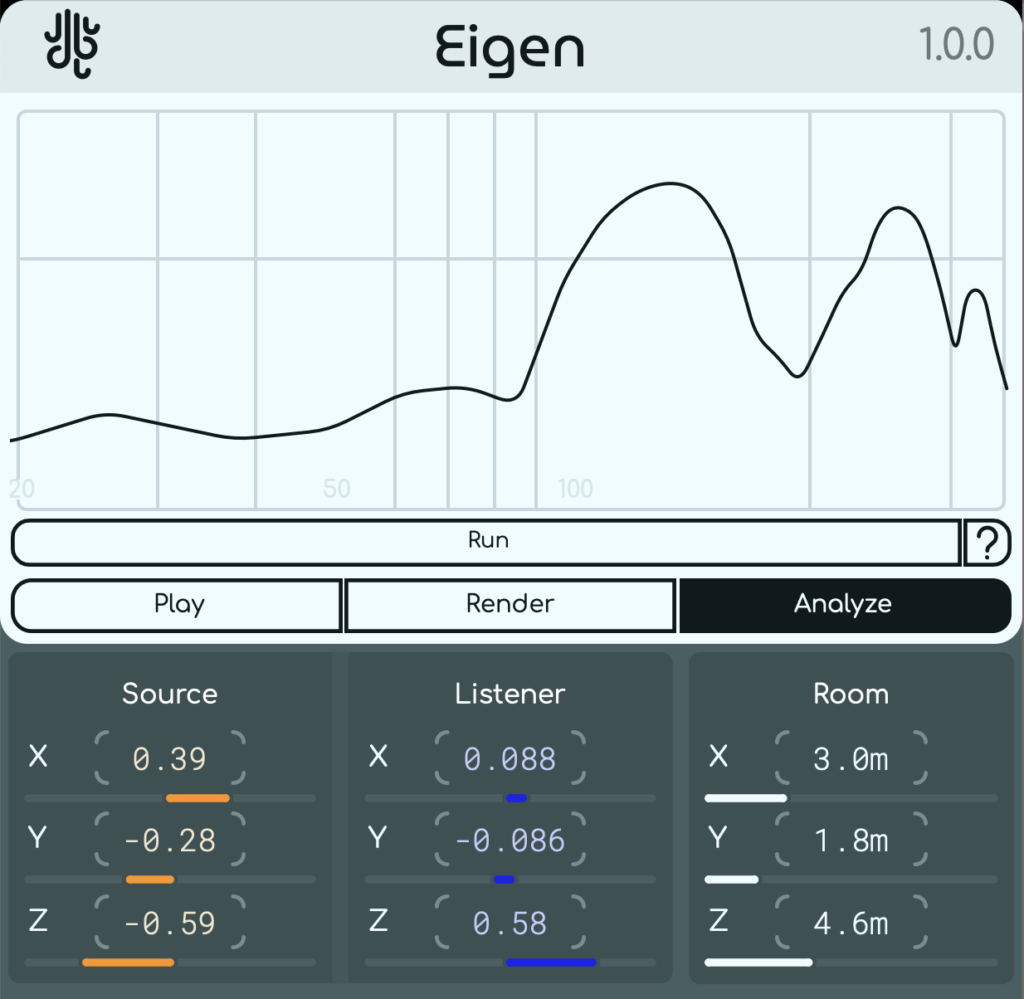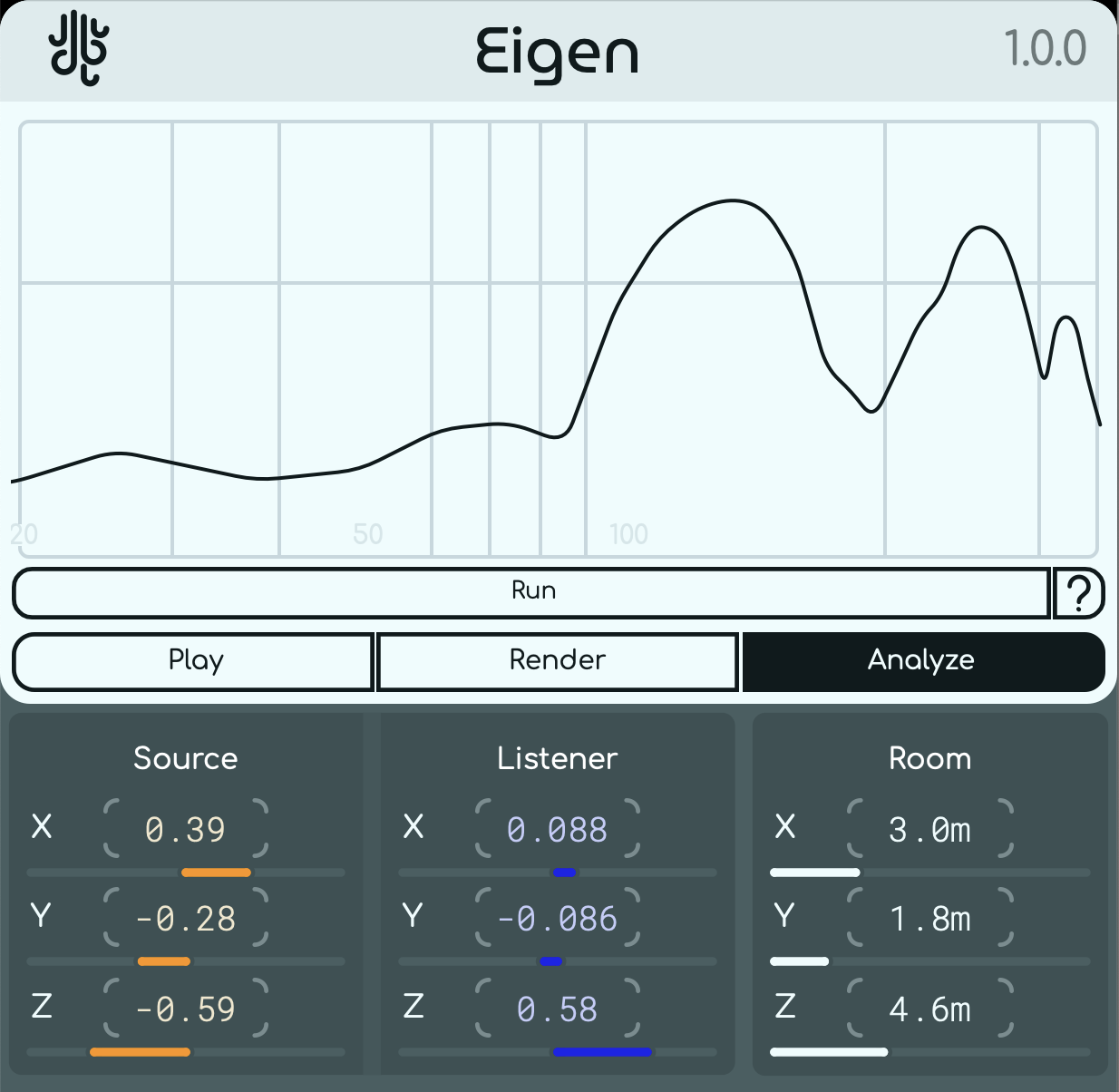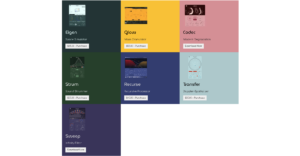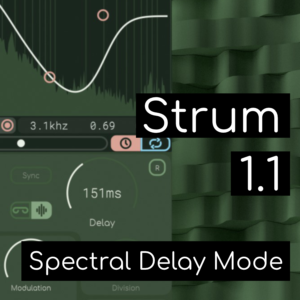Ever been in a bad-sounding room? Been told your studio needs bass traps? One key problem in room acoustics – especially studio acoustics – is room modes. Here’s how they work and what you need to know about them.
We recently released Eigen, our reverb plugin, which lets you build a virtual cuboid-shaped room of any dimensions you want. As part of Eigen, there’s an analyzer that shows you the room modes at play in the space you’ve built. This post will explain room modes through Eigen’s analyzer, which was built for just this purpose.
What are Room Modes?
Room modes are resonances caused by the dimensions of a room and the resulting distances between its walls. These modes build up to give a room its unique resonant frequency profile, and they’re most significant in the bass end up to about 300Hz.

Let’s say your room is exactly 3.00 meters long – that exact length will exactly fit waves with the wavelength 3.00 meters, 1.50 meters (twice), 1.00 meters (three times), 0.75 meters (four times), and so on. It will also fit a wavelength of 6.00, as the
Divide the speed of sound (usually taken as 344 meters per second) by these lengths, and you find the frequencies that resonate between the two walls: 57.3Hz, 115Hz, 229Hz, 344Hz and 459Hz. These resonances are the room modes caused by this length.
You can see the first few of these resonances – 57Hz, 115Hz, 229Hz and 344Hz – appearing in Eigen’s Analysis graph above. They’re directly caused by the room length of 3.0m that we’ve set for the room’s X dimension in the plugin. As we’ll see later, the exact profile is actually affected by many other things too.
What do Room Modes do?
These resonances (‘room modes’) mean that these frequencies (57Hz, 115Hz, 229Hz, 344Hz and 459Hz), when played in a room with that 3.0m distance between any two parallel walls, will be more prominent in your sound and its reverb signal.
This is one factor that gives a reverberant space its character, and you can test it out yourself next time you’re singing pitch sweeps in the shower – some frequencies simply reverberate louder than others, and so ring out longer than others. It’s because of the dimensions of the space that holds the sound.
In music production, everything has a frequency – well, it has multiple frequencies or specific bands of them. When we play, record or simulate an instrument, which has its own internal notes and resonances, in a room that also has it’s own resonances, we can get frequencies emphasized too much, or even attenuated when they shouldn’t be. A room is, actually, very much like an EQ!
But Wait, it Gets Worse
Yep, there’s more: your room doesn’t just have two walls. Since it also has a height and a width, there are more parallel walls to support more resonances – each with its own spacing and its own set of resonant frequencies it supports.
As you can also see in Eigen, even the positions of the source and listener within a room have an effect on what modes are actually experienced. With the intermingling of so many standing waves in the room, areas of interference are created, similar in nature to the interference patterns of light, but big enough to walk through… and invisible.
This is why reverberant spaces can be such a mess – especially for bass sounds. But with Eigen’s mode analysis features, you can test out the room modes of the space you’ve created and tweak your room’s dimensions once again to give you a smoother profile. Sometimes a small tweak goes a long way.

In the image above, we’ve slightly changed the dimensions of the room, as well as respositioning the source and listener, and changing the materials used in the walls. There are still bumps in the frequency spectrum, but it’s a lot smoother and more consistent than it was.
What’s the Ideal Profile for Room Modes?
On paper, the best frequency response for a room would be completely smooth. This would, technically, mean that your signal comes through faithfully, with added reverb that doesn’t emphasize any frequencies in particular.
On the other hand, music is all about character, so as long as your room modes are characterful and not overwhelming, they can contribute to a sound that has personality, interest, and most of all, reality.
After all, some of music’s most famous recordings took place in rooms and studios that brought ‘that special something’ to the table.
You can buy Eigen (VST/AU) or download the free demo on our Eigen page.




